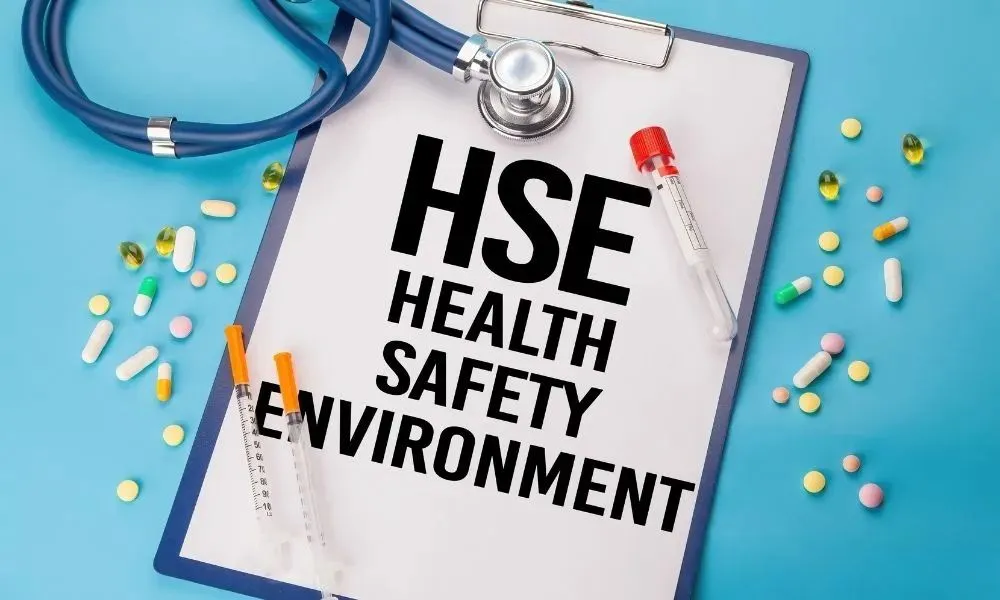HSE meaning is actually the abbreviation of Health Safety and Environment. HSE is concerning with laws, rules and procedures related to the safety of public, workers, and environment. For any successful business or department the safety is the must have requirement. HSE deals with the safety procedures and guidelines that must be adopted for ensuring the health and safety of the workers, employees, and public and keeps the environment pollution free and healthy for human beings.
HS&E principles are crucial in today’s industries, steering companies toward sustainable and responsible business practices. Why should businesses pay attention to it? Let’s unpack this!
What is HSE Meaning?
We have already discussed that by HSE meaning, we mean three words that are Health, Safety, and Environment. You might be thinking, “Why we are discussing about HSE?” Well, imagine it as a three-legged stool supporting the well-being of workers and employees that leads to sustainability of a business or an organization.
First up is ‘Health‘. Heath is the most important aspect of everyone’s life. For a worker or an employee, the good health means highest efficiency in his work. If a worker is physically and mentally healthy, then off course his/her efficiency will be 100%. This will lead to the highest growth of a business or organization. Hence, making rules for ensuring health of workers and implementing them in true spirit is the most important requirement for the success of any business or organization.

Then, we have ‘Safety‘. When we talk about safety for workers and employees, we talk about the safe and secure working atmosphere. Rules and procedures must be implemented to minimizing accidents and dangerous incidents in the workplace. There must be a special department within a business entity or organization that should monitor the observance of safety rules and procedures.
Last but not the least, ‘Environment‘. Environment also plays a very important role in the success of any business or organization. Pollution-free and healthy environment boosts the efficiency of workers. On the other hand, a noisy or unhealthy environment will badly affect the performance of workers or employees. It is also the responsibility of management to ensure safe and healthy environment.
So, HSE meaning is essentially about caring for people and the planet while we do our work. The feeling of being safe and secure is the main requirement of every human being. Hence, HSE is applicable to everyone.
While discussing about Environmental, Health and Safety (EHS) or Safety, Health, and Environment (SHE), they both corresponds to a particular sector or division within a corporation. Their main task is to uphold and monitor occupational health and safety guidelines and environmental preservation. It’s also frequently identified as Environmental Health and Safety (EHS) or Safety, Health, and Environment (SHE).
HSE Health Considerations
Ever heard the saying, “Health is Wealth”? It’s not just true for individuals but for companies too! Fostering a healthy work environment is paramount. Occupational health hazards such as exposure to harmful chemicals, excessive noise, or ergonomic issues can harm employees’ well-being.
Regular health risk assessments are the unsung heroes here. Companies can nip occupational diseases in the bud by identifying potential health risks and implementing preventive measures.
Remember workplace ergonomics! Have you ever felt a nagging backache after sitting in your office chair for too long? Ergonomically designed workspaces can significantly boost health and productivity. It’s like that comfortable pair of shoes – the right fit can make all the difference!

HSE Safety Considerations
No one wants accidents. Workplace safety is a crucial pillar of HSE meaning. Picture a construction site without safety helmets or a chemical lab sans protective gear. It sounds like a disaster waiting to happen!
Identifying common safety hazards and implementing appropriate measures is not a luxury but a necessity. Employee safety training plays a pivotal role here. Just like you wouldn’t hand over car keys to someone who doesn’t know how to drive, workers must be well-versed in safety practices before handling hazardous tasks.
HSE Environmental Considerations
Do you want to leave behind a healthy planet for future generations? Well, the environment is a key player in the HSE triad. Industrial practices can significantly impact the environment, contributing to pollution, resource depletion, and climate change.
That’s where Environmental Management Systems come in, acting as the environmental guardians of the corporate world. They promote sustainable practices, helping companies to reduce their environmental footprint. Imagine if every company was an environmental steward. Wouldn’t the world be a greener place?
HSE Policies and Regulations
Rules, policies, and regulations might sound boring, but they form the backbone of Health, Safety, and Environment (HSE). Just like traffic rules prevent chaos on the roads, HSE legislation ensures safety and health in the workplace, in the United States, or in any other part of the world.
Non-compliance can result in severe penalties, legal ramifications, and a tarnished reputation. In the United States, entities such as the Occupational Safety and Health Administration (OSHA) are diligent in enforcing these regulations. Who would want to be on their wrong side, right? Hence, understanding and abiding by HSE policies, including those specifically designed for the United States, is paramount.
In this case, regulatory bodies are like your friendly neighborhood watch, maintaining an eye on HSE adherence. They ensure that the best practices are upheld within workplaces across the United States, safeguarding the health and well-being of all employees. So, as you traverse the complex world of HSE policies, remember that their role is essential in creating a safer, healthier work environment.

HSE Management and Leadership
Leadership in HSE is not about wielding power but about fostering a culture of safety, health, and environmental responsibility. Think about it – would you follow safety procedures if your boss doesn’t?
Leaders can create successful HSE management systems, setting a positive example. By integrating HSE into the business strategy and culture, companies can ensure that HSE isn’t a mere afterthought but a driving force.
Role of HSE in the Workplace
HSE plays a pivotal role in any workplace. Let’s see why.
Health and Productivity
Did you know a healthy workforce is a productive one? That’s right! When employees are physically and mentally healthy, they perform better.
Safety and Risk Management
A safe workplace is less prone to accidents, reducing costs related to injuries and downtime and is important to protect employees. Moreover, it shows that the organization values its workforce, fostering a positive culture.
Environment and Sustainability
Sustainability is no longer just a buzzword; it’s a business imperative. A strong HSE policy ensures an organization meets its environmental responsibilities, enhancing its reputation.
Implementation of HSE
Implementing HSE isn’t a walk in the park. It requires a well-structured plan, ongoing training, and regular evaluation.
HSE Policies
An effective HSE policy provides a roadmap for how an organization should handle health, safety management, and environmental issues. It guides decision-making and sets expectations for behavior.
HSE Training and Education
More than having a policy is needed; employees need to understand it. That’s where training comes in. Regular HSE training ensures that all staff know their roles and responsibilities.
Monitoring and Evaluation of HSE Practices
Implementing HSE is more than just a one-and-done task. It requires constant monitoring and evaluation to ensure effectiveness and make necessary improvements.

Challenges in HSE Implementation
Despite its importance, HSE implementation is challenging.
Regulatory Compliance
With changing regulations, keeping up-to-date can be tough. Failure to comply, however, can result in hefty fines and a tarnished reputation.
Technological Constraints
While technology can aid HSE efforts, it can also present challenges. Some organizations might need more resources to adopt the necessary technologies.
Employee Resistance
Change can be hard. Getting employees on board with new HSE policies and procedures can be a significant hurdle.
Future of HSE
Looking forward, HSE will continue to evolve.
Technological Innovations in HSE
From wearable safety tech to AI-based risk assessment, technology will play a big role in shaping the future of HSE.
Emphasis on Mental Health
Mental health is emerging as a crucial aspect of HSE, with organizations recognizing its importance and incorporating measures to ensure psychological well-being.
Sustainability and HSE
The link between HSE and sustainability will strengthen, with an increased focus on sustainable business practices.
Conclusion
So, there you have it – HSE meaning is that the importance of HSE in modern industry can’t be overstated. It’s about adhering to regulations and creating a culture that values health, safety, and environmental sustainability. As we continue to evolve and grow, remember HSE isn’t a checkbox exercise but a cornerstone for success. So, are you ready to embrace the HSE culture? The future is in your hands!
Frequently Asked Questions
1. What is the HSE meaning?
HSE meaning is Health, Safety, and Environment. It is a discipline focused on ensuring the well-being of employees, the safety of the workplace, and the minimization of environmental impact from work activities.
2. Why is HSE important?
HSE is crucial as it preserves our workspaces’ integrity, promotes workers’ health and safety, and ensures responsible environmental practices.
3. How is HSE implemented?
HSE is implemented through a HSE management system that plans, checks, and improves strategies and practices. It includes risk assessment and continuous improvement.
4. What are some examples of HSE measures?
Some examples of HSE measures include safety training, use of personal protective equipment, waste management, and implementing mental health support programs.
5. What is the role of HSE in sustainable practices?
HSE promotes sustainable practices by encouraging responsible use of resources and minimizing environmental harm caused by company operations.
